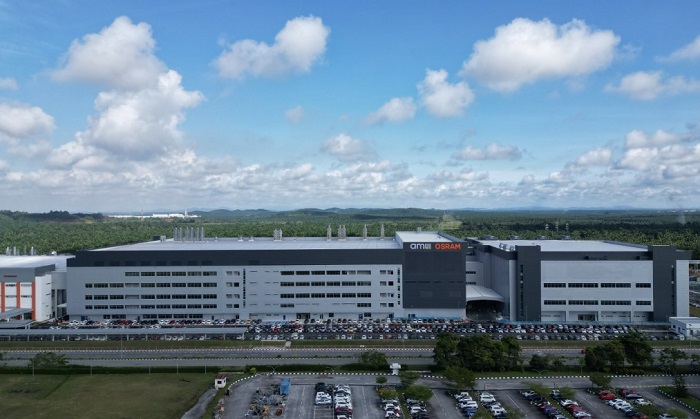After losing major customer, Osram scales back micro LED dream, to sell plant in Malaysia owned by PNB, EPF, KWAP
By Karamjit Singh May 6, 2024
- Cancellation by major customer, believed to be Apple, trigger for decision
- Original plan was to buy back plant from pension funds, asset manager after 10 years

In a sign of how once promising future revenue sources of growth can go south in the world of hi-tech manufacturing - very fast - ams Osram, a Austrian-German global optical solutions specialist, especially in automotives, with a 52 year presence in Malaysia, has pulled the plug on its recently completed micro LED plant in Kulim Hi-tech Park, Kedah with an estimated US$1 billion (RM4.75 billion) multiyear, multi stage investment. The current building represents the first phase of that investment.
Micro LED takes traditional LEDs and shrinks them down to the microscopic level. The technology was once touted to be the future of displays.
Osram began its Malaysian presence in 1972 as Siemens. In 2020, ams, an Austrian electronics company that designs and manufactures sensors for small form factor, low power, highest sensitivity, and multi-sensor applications, acquired German based Osram.
During his analyst call on 27 April in Austria, ams Osram CEO, Aldo Kamper revealed that the cancellation in Feb by a key customer for the plant’s micro LEDs, believed to be Apple according to media reports, led to ams Osram reevaluating its entry into the micro LED market with the decision now to focus on its internal micro LED needs and not the wider market. That need will be met by its production in Germany. It is now seeking a buyer to take over the lease of its Kulim micro LED plant.
That lease is held by three Malaysian funds, namely asset manager Permodalan Nasional Bhd (PNB), and pension funds Employee Provident Fund (EPF) and Kumpulan Wang Persaraan (KWAP) who came into the picture last year when, as part of its financial restructuring, a €400 million (RM2.03 billion) sale and leaseback of the micro LED site was executed with a commitment from ams Osram to buy it back from the pension funds after ten years, possibly even earlier if it wanted to.
In response to a question from DNA, a PNB spokesperson said, "PNB, EPF, KWAP and ams Osram are in regular contact to explore alternative solutions to ensure a mutually beneficial outcome for all involved including looking for a different party to take over ams Osram’s lease. We have a robust agreement and are comforted that our investment with ams Osram is protected, We remain optimistic about ams Osram’s financial strength as a leading tech company to maintain the commercial viability of the manufacturing facility."
[Article updated on 7 May with statement from PNB representing EPF, KWAP and PNB.]
Those plans are now shot, thanks to the cancellation of what Kamper described as a “cornerstone” contract during the analyst briefing It is not known whether ams Osram has opened talks with any parties yet.
There is no financial hit to the three Malaysian funds as, in a worst case scenario where ams Osram fails to find a party to take over its lease, ams Osram will continue to honor its financial obligations to PNB, EPF and KWAP, said a person familiar with the matter.
The new plant sits next to an existing Kulim plant that makes conventional LEDs and opened in 2017 at an investment of US$398 million (RM1.9 billion). “It is business as usual for that plant,” said an ams Osram executive who spoke on condition of anonymity.
Roughly 500 workers will be affected globally by the decision with a significant number said to be in Penang. The executive said the company is looking at the possibility of redeploying some of those workers to other parts of its business in Malaysia.
That is a business which has grown to around 6,500 employees from 2,000 in the early 2000s. Its latest investment was an expansion in March 2022 to a 60-acre site in Batu Kawan, Penang
Malaysia is a key manufacturing and R&D hub for ams Osram. Its R&D team out of Penang and Kulim has grown to around 400 researchers from when it started about 20 years ago and has numerous patents to its credit.
“The business outlook for the sensors and LED market is still growing and we have business lines that are doing well and growing in other areas,” said the executive.
Ams Osram has been making LEDs for multiple applications from its Malaysia plants, ranging from infrared through to the ultraviolet. It is also the number one global player in automotive optoelectronics including various headlamps, taillights, and interior lighting in cars.
“We are clear market leader in automotive optoelectronics and what has happened is a bump in the road that we will work through,” said the executive.
Related Stories :


